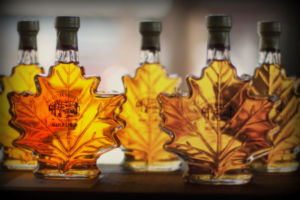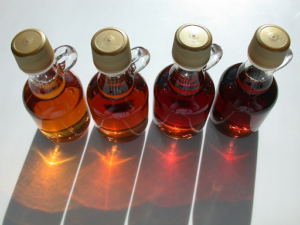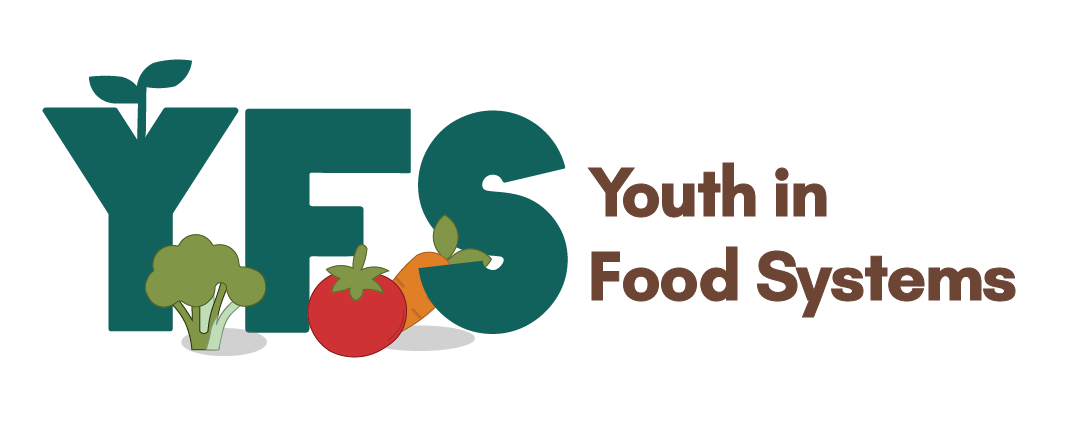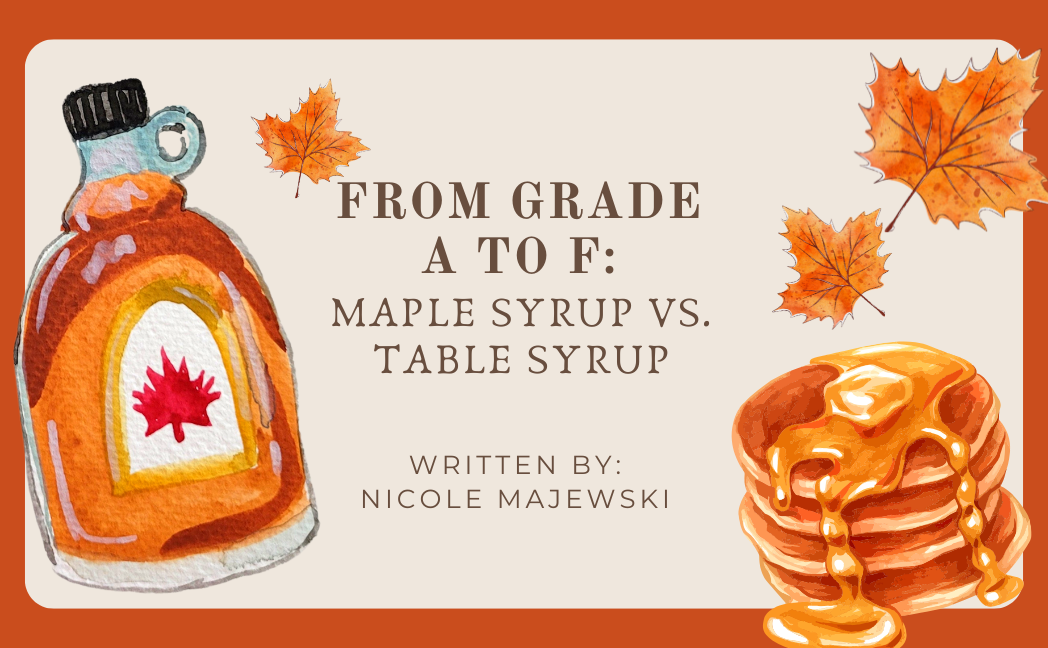Written by: Nicole Majewski
Edited by: Thy Pho
Designed by: Alessa Zaitseva
Published by: Maryam Khan
As Canadians, the concept of fake maple syrup is sure to shock any of us. How is it possible that the term “syrup” may not always refer to the sweet amber concoction we all know and love? Unthinkable! How is it possible that there is actually a set of criteria that defines maple syrup, and much of what we’re consuming may not even be the real deal? Unimaginable.
Not to worry, though. Today, we’ll cover everything you need to know about maple syrup, and how you can spot the cheaters.

What is maple syrup?
Maple syrup begins as sap harvested directly from maple trees, before it is boiled down into a concentrated syrup. The term “pure maple syrup” formally refers to completely natural maple syrup and consists of 100% unrefined maple syrup. Maple syrup is renowned for its multidimensional flavours, which are difficult to even put into words. Beneath its authentically sweet maple taste, you can identify undertones of caramel, toffee, vanilla, and especially in darker grades, a slight nuttiness. Overall, real maple syrup’s palette distinctly reflects the natural woodland it originates from.
How is maple syrup graded?
Fascinatingly enough, not all maple syrup can simply be categorised as “maple syrup”. There are several different “grades”, which make up the grading system. The International Maple Syrup Institute grades maple syrup on four levels, primarily based on their colour, thickness, and flavour intensity:
Grade A Light Amber
- Colour: Light golden
- Thickness: Thin
- Flavour Intensity: Mild, delicate
Grade A Medium Amber:
- Colour: Slightly light golden
- Thickness: Thin
- Flavour intensity: Moderate
Grade A Dark Amber
- Colour: Dark golden to brown
- Thickness: Moderate
- Flavour intensity: Strong
Grade A Very Dark
- Colour: Dark brown to very dark brown
- Thickness: Thick
- Flavour intensity: Borderline intense
Processing Grade: Maple syrup containing off-flavours or sediment
Interestingly, the first four–and primary–grades reflect the time of the season that the syrup was harvested in. Light Amber is harvested early into the season, while Very Dark Strong originates from sap collected at the season’s end.

What is table syrup?
Put simply, table syrup–also known as pancake syrup–is non-pure maple syrup. It’s primarily made of corn syrup and artificial maple flavouring. Table syrup substitutes much of what characterises real maple syrup with artificial colours and flavours, like caramel colouring, as well as added preservatives and sugars. This dilutes the complex maple taste that pure maple syrup boasts–typically substituting this original complexity with a bland sweetness. Table syrup also lacks the nutritional value of pure maple syrup, as it contains none of the same vitamins.
How can you differentiate between the two?
Despite their differences, maple syrup and table syrup do often share visual similarities. So, how do you know what you’re really eating? The best way to find out is by reading product labels. Real maple syrup will list just one ingredient; maple syrup! In contrast, table syrup will display a lengthy list of essentially anything other than that.
Another key giveaway you can find on the product’s bottle is the Organic sticker–or the lack of it. This sticker guarantees that what you’re buying is certified pure maple syrup. To get an Organic sticker, the maple syrup must meet strict quality standards, so you can be sure that any bottle with that label is the real deal.
Other than that, there’s always the taste test! Once you’ve tried real maple syrup, table syrup will seem starkly different. Most notably, table syrup consists of a much stronger sweetness, which can taste distinctly artificial. Additionally, you can take note of the syrup’s consistency. All grades of maple syrup pour fairly easily, whereas table syrup is much thicker and consequently, pours much slower.
Overall, maple syrup is a distinctly one-of-a-kind delicacy that remains unmatched by inauthentic table syrup. Now that you know the difference, and how to check which is which, you’re on your way to becoming a maple syrup connoisseur!
Resources
https://www.maplesyrupworld.com/blog/pure-maple-syrup-vs-table-syrup-whats-the-difference/
https://www.floodwoods.com/blogs/news/syrup-showdown-the-real-deal-on-maple-syrup-vs-pancake-syrup-1
https://biggle.ca/blogs/news/complete-guide-maple-syrup-grades
https://www.tastingtable.com/737400/real-vs-fake-maple-syrup-heres-how-to-tell-the-difference/
Images
https://commons.wikimedia.org/wiki/File:Syrup_grades_large.JPG

